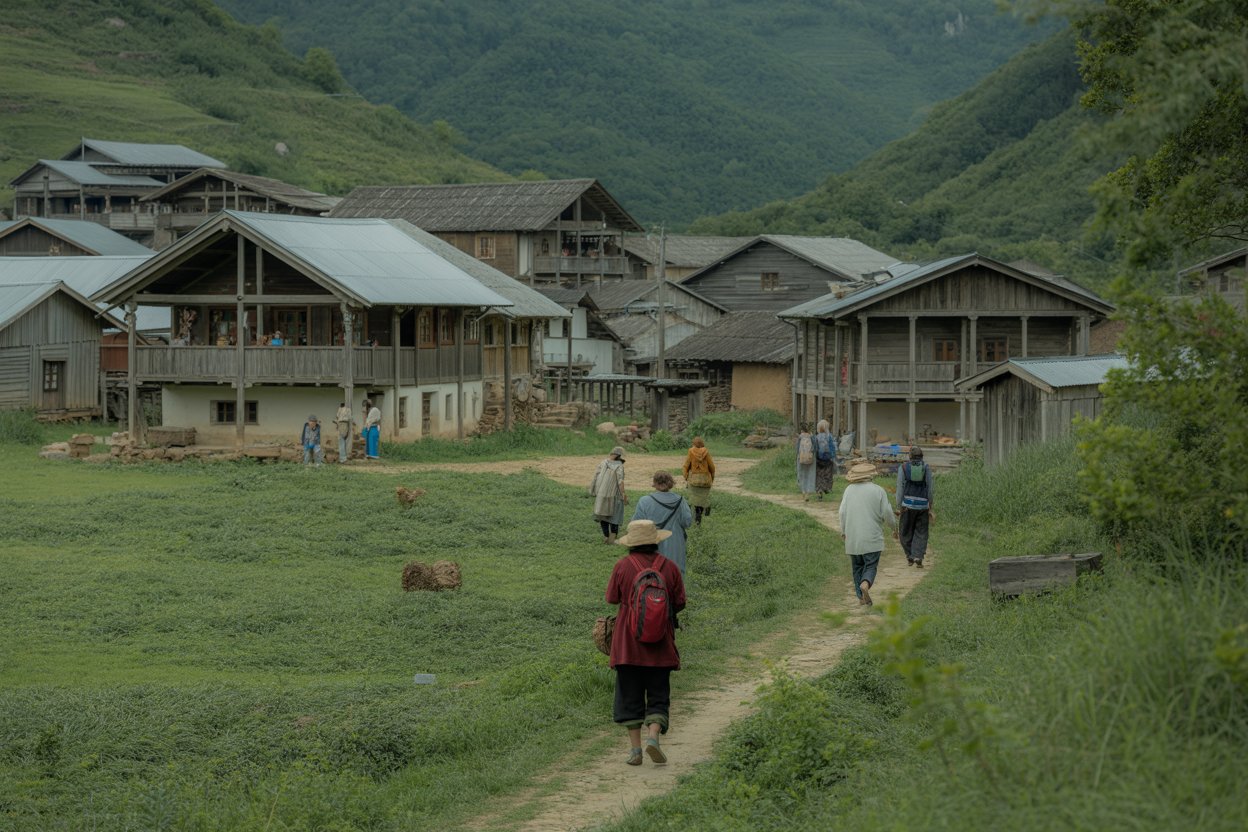The rural landscapes of the world are often painted as quiet backdrops to bustling cities and resort coastlines. Yet in 2025, a major initiative led by UN Tourism (a specialised agency of the United Nations World Tourism Organization) is spotlighting small communities — and redefining what tourism can achieve beyond the usual hotspots. In its fifth edition of the “Best Tourism Villages” programme, the agency has recognised fifty‑two rural destinations from all regions as leaders of inclusive, sustainable tourism.
These recognitions mark more than just accolades: they reflect a broader shift in travel trends, rural development strategies, and the tourism industry’s role in local economies. Belo,w we explore the key angles and impacts of this initiative, why readers should care, and what it means for tourism and destinations in 2025 and beyond.
The Initiative: What It Is and What It Recognises
Launched in 2021 under the “Tourism for Rural Development” programme, the Best Tourism Villages initiative aims to identify and support rural communities with strong cultural and natural assets, committed to responsible tourism and inclusive development.
In the 2025 cycle:
- Fifty‑two villages were officially recognised this year for meeting the full criteria of the programme.
- An additional twenty villages were selected for a dedicated Upgrade Programme — helping high‑potential communities improve before full recognition.
- With the new additions, the network of recognised Best Tourism Villages now numbers three hundred and nineteen globally.
The selection criteria are robust and multi‑dimensional. Communities were assessed on nine key areas: cultural and natural resources; promotion and conservation of cultural resources; economic, social, and environmental sustainability; tourism development and value‑chain integration; governance and prioritisation of tourism; infrastructure and connectivity; and health, safety, and security.
The Tourism Angle: What This Means for Travel and Destinations
1. New Travel Narratives and Experiences
For travellers increasingly seeking experiences beyond beaches and cities, these rural villages offer authentic alternatives. The recognition signals that these destinations deliver more than superficial tourism — their value lies in local culture, heritage, nature, and community engagement. As one travel commentary put it, choosing such a village means entering a destination where visitors support local livelihoods, engage with traditions, and connect at a slower pace.
2. Supporting Rural Economies through Tourism
When a village is recognised under this initiative, the spotlight draws attention. That often translates into increased visitor numbers, higher visitation spend, more interest from travel media and platforms, and awareness among specialised tour operators. All of this can contribute to local economic diversification — especially for rural communities whose traditional industries may be limited. In turn, tourism becomes a pathway to shared prosperity, inclusive growth, and territorial cohesion.
3. Destination Diversification and Off‑Peak Resilience
Many destinations rely heavily on peak seasons in urban or coastal zones. The Best Tourism Villages programme helps highlight lesser‑known areas, spreading tourism flows and alleviating pressure on crowded destinations. Moreover, rural destinations often have different seasonal rhythms — promoting them helps build resilience by opening new travel windows. For example, a village recognised now becomes a compelling reason to travel outside the main travel surges.
4. Sustainability and Community‑Based Tourism as Core Values
Sustainability is not just an add‑on — it is central to this initiative. Villages must show how tourism is embedded in community values, how heritage and nature are preserved, and how visitors impact is managed. For responsible travellers, recognition offers a credible filter: these are places where tourism is doing good, not just taking.
Impact at Destination Level: What Villages Can Gain
Visibility and Branding
Being listed as a “Best Tourism Village” is a badge of quality. It offers global visibility via UN Tourism’s platforms and media coverage. This can help destinations attract tour operators, media features, and independent travellers looking for credible alternatives.
Increased Visitor Interest & Bookings
Media reporting suggests that villages recognised in previous years saw a boost in tourism interest. For example, smaller communities on islands or lesser‑known regions reported increased search traffic and booking enquiries following their award. This effect is likely to be replicated with the 2025 list.
Local Capacity Building & Improvement
The Upgrade Programme offers mentoring and capacity‑building for communities moving towards full recognition. Infrastructure, governance, connectivity, and value‑chain integration are often improved as a result. This means long‑term benefit rather than one‑off recognition.
Tourism Spread and Balanced Growth
By promoting rural destinations, the initiative supports the redistribution of tourism benefits beyond major cities and resorts. This aligns with rural development goals and can help reduce regional imbalances. Economies traditionally reliant on agriculture, artisanal industries, or nature‑based practices can now diversify via tourism.
Risk Moderation for Destinations
For destinations overexposed to mass tourism, the recognition of rural villages offers an alternative model. A focus on smaller-scale, community‑driven tourism may be more resilient to global shocks (e.g., pandemics, climate events) and can help destinations avoid overtourism pitfalls.
Why Tourism Professionals and Travellers Should Pay Attention
- Travel planners: For tour operators and destination managers, the list provides a curated set of villages worth visiting, promoting, or including in itineraries. The criteria mean they are likely to deliver quality experiences aligned with sustainability trends.
- Investors & Governments: For policy‑makers and development agencies, the initiative highlights the efficacy of rural tourism as a tool for economic and social development. Recognised villages can serve as case studies or models.
- Travellers: For the conscious traveller, these destinations offer meaningful stays — engaging with communities, culture, and nature, rather than simply checking boxes. The recognition assures responsible practices.
Challenges & Considerations
It’s worth recognising that inclusion on the list is not a guarantee of overnight transformation. Destinations still need to scale infrastructure, connectivity, accommodation, and visitor services. For some villages, limiting visitor numbers to maintain sustainability is essential. Additionally, as tourism interest grows, local communities must manage change carefully to avoid commodification of culture or environmental degradation.
There is also the issue of representation: for example, in 2025, no Indian village was included in the list, despite the country’s vast rural tourism potential. This suggests challenges remain around documentation, connectivity, governance, or meeting the stringent criteria.
Looking Ahead: What This Means for Travel Trends in 2025–26
- Growth in “Slow Travel”: Understanding tourism as slower, immersive experiences rather than high‑volume visits will increase. These villages fit that trend.
- Shift to Rural Tourism: As urban and coastal destinations face crowding or sustainability pressures, rural tourism will become part of destination portfolios.
- Integration of Culture & Nature: The successful villages blend built heritage, indigenous culture, landscapes, and modern hospitality. This hospitable hybrid will influence destination design.
- Premiumisation of Rural Stays: While rural tourism often conjures budget stays, many of the recognised villages are attracting higher‑end travellers as they improve standards and connectivity.
- Strategic Development Support: Governments and tourism boards will increasingly view such initiatives as tools for diversification, inclusion, and resilience.
A Few Examples to Illustrate the Global Spread
The recognised villages span continents. Some examples:
- Koyasan in Japan — a spiritual mountain settlement.
- Pemuteran in Indonesia — a coastal village noted for marine conservation and sustainable tourism.
- Ezcaray in Spain — one of the two Spanish villages on the list this year.
These cases show how different geographies, cultures, and tourism models can meet the common criteria of sustainable, community‑driven tourism.
For Destination Marketers and Planners: Strategic Implications
- Use the recognition as a marketing anchor. Having the “Best Tourism Villages” label from UN Tourism can enhance the destination’s narrative internationally.
- Leverage the principles of the initiative for local development strategies: prioritise sustainability, local value chains, community governance, and visitor management.
- Plan for infrastructure and capacity upgrades ahead of rising visitor numbers to maintain quality and local benefits.
- Ensure tourism development is inclusive: communities should participate in decision‑making, benefit from revenue streams, and preserve cultural integrity.
- Monitor and adapt: as the global travel market evolves, the hallmark of success will be adaptability, culture‑first design, and conscious scalability rather than mass growth.
Why This Source of Travel Inspiration Matters
The 2025 list of Best Tourism Villages marks a turning point in how travel is framed — less about iconic city skylines or beach resorts, and more about places where culture, nature and c, and community coexist in harmony with visitors. For travellers, this means fresh, meaningful options. For destinations, it means tourism that contributes rather than consumes.
Whether you’re a traveller seeking a unique holiday, a destination professional looking for best‑practice models, or a tourism board aiming to diversify your region’s offering, these rural communities and their recognition under UN Tourism’s initiative are worth watching.
Because truly sustainable tourism isn’t just about reaching new places — it’s about ensuring those places flourish with visitors, communities and n, and nature in a balanced way.
Source: travelandtourworld.com






